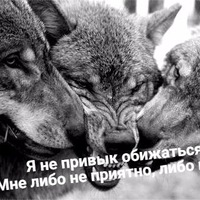
ПОМОГИТЕ ОООЧЕНЬ СПОЧНО ЗАДАНИЕ: 1 вариант Определите тип текста, аргументируйте свой ответ. Очём
повествует данный текст? Что символизирует данный праздник? Назовите обычаи и традиции, связанные с Масленицей?ТЕКСТ: Масленица-традицнонный праздник русского народа, отмечаемый в течение недели перед Великим Постом. Очень давно Масленица была скоpее не праздником, а обрядом, когда чтилась память ушедших предков. Задабрнвая их блинами люди просили у них плодородного rода, а сжиганием соломенного чучела провожали зимy. Прошло время, н русский народ, жаждуший веселья и положительных эмоций в холодное и унылое время года, превратил грустный праздник в более веселое и разудалое торжество, которое стало символизировать радость скорого окончания зимы и прихода долгожданного тепла, Смысл изменился. а традиция печь блины осталась. появились захватываюшие зимние развлечения: катания с горок на санках и в конных упряжках, сжигание соломенного чучела Зимы, хождение родственников на блины то к теще. то к золовке всю масленичную неделю. В эти дни везде царит атмосфера праздникан веселья, на улицах проводятся различные театральные и кукольные представления с участием Петрушки и других фольклорных персонажей. Одним из весьма колоритных и опасных развлечений на Масленице является проведение кулачных боев, в них участвует мужское населенне, которое должно с честью принимать участие в своеобразном «ратном деле», проверяюшем их на мужество, смелость и ловкость.  0
0
 0
0
Ответы на вопрос
 Внимание! Ответы на вопросы дают живые люди. Они могут содержать ошибочную информацию, заблуждения, а также ответы могут быть сгенерированы нейросетями. Будьте внимательны. Если вы уверены, что ответ неверный, нажмите кнопку "Пожаловаться" под ответом.
Внимание! Ответы на вопросы дают живые люди. Они могут содержать ошибочную информацию, заблуждения, а также ответы могут быть сгенерированы нейросетями. Будьте внимательны. Если вы уверены, что ответ неверный, нажмите кнопку "Пожаловаться" под ответом.

Ответ:
малсынба
......
...
....
....
 0
0
 0
0

Type of Text and its Content
The given text is about the Russian holiday called Maslenitsa. Maslenitsa is a traditional holiday celebrated by the Russian people during the week before the Great Lent. It has evolved from being a ritual to honor departed ancestors to a more joyful and lively celebration symbolizing the joy of the approaching end of winter and the arrival of spring. The text mentions various customs and traditions associated with Maslenitsa, such as making and eating pancakes (blini), burning a straw effigy of Winter, participating in winter activities like sledding and horse-drawn rides, and engaging in festive performances with folk characters like Petrushka. It also mentions the dangerous tradition of conducting fistfights as a test of courage and skill during Maslenitsa.
Symbolism of Maslenitsa
Maslenitsa symbolizes the joy and anticipation of the end of winter and the arrival of spring. It is a time for the Russian people to celebrate and enjoy themselves after the long and cold winter months. The burning of the straw effigy of Winter represents the symbolic farewell to the cold season, while the tradition of making and eating pancakes (blini) is associated with the hope for a fruitful and abundant year ahead. The various winter activities, festive performances, and the overall atmosphere of celebration during Maslenitsa contribute to the symbolism of joy and the anticipation of warmer days.
Customs and Traditions of Maslenitsa
1. Making and Eating Pancakes (Blini): One of the central customs of Maslenitsa is making and eating pancakes. Blini are round, thin pancakes made from flour, eggs, milk, and butter. They are traditionally served with various toppings like sour cream, butter, caviar, or jam. The round shape of blini symbolizes the sun and the coming of spring.
2. Burning the Straw Effigy of Winter: During Maslenitsa, a straw effigy representing Winter is constructed and then burned in a bonfire. This ritual symbolizes the farewell to the cold season and the hope for the arrival of spring.
3. Winter Activities: Maslenitsa is a time for outdoor winter activities. People engage in sledding, horse-drawn rides, and other winter sports as a way to enjoy the last days of winter before the arrival of spring.
4. Visiting Relatives: It is a tradition during Maslenitsa for relatives to visit each other and share pancakes. People often visit their in-laws or other relatives, bringing blini as a symbol of goodwill and family unity.
5. Festive Performances: Maslenitsa is accompanied by various theatrical and puppet performances featuring characters from Russian folklore, such as Petrushka. These performances add to the festive atmosphere and entertain the participants.
6. Fistfights (Kulachniye Boyev): One of the more unique and dangerous traditions of Maslenitsa is the practice of fistfights. Men participate in these fights as a way to demonstrate their courage, bravery, and physical prowess. These fights are conducted in a controlled manner and serve as a test of strength and skill.
Overall, Maslenitsa is a vibrant and joyous celebration that combines ancient rituals with more modern customs. It is a time for the Russian people to come together, enjoy delicious food, engage in various activities, and celebrate the approaching end of winter and the arrival of spring
 0
0
 0
0
Похожие вопросы
Топ вопросов за вчера в категории Русский язык
Последние заданные вопросы в категории Русский язык






-
Математика
-
Литература
-
Алгебра
-
Русский язык
-
Геометрия
-
Английский язык
-
Химия
-
Физика
-
Биология
-
Другие предметы
-
История
-
Обществознание
-
Окружающий мир
-
География
-
Українська мова
-
Информатика
-
Українська література
-
Қазақ тiлi
-
Экономика
-
Музыка
-
Право
-
Беларуская мова
-
Французский язык
-
Немецкий язык
-
МХК
-
ОБЖ
-
Психология
-
Физкультура и спорт
-
Астрономия
-
Кыргыз тили
-
Оʻzbek tili


















